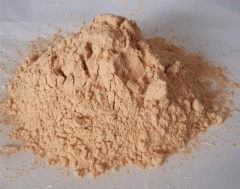Difference between revisions of "Baryte"
| (One intermediate revision by the same user not shown) | |||
| Line 18: | Line 18: | ||
Consideration should be given to the inherent weight of the cargo with regard to the stowage in containers or on board vessels. The product is often shipped in big bags.<br><br> | Consideration should be given to the inherent weight of the cargo with regard to the stowage in containers or on board vessels. The product is often shipped in big bags.<br><br> | ||
Heavy cargo: ensure container is not overloaded. | Heavy cargo: ensure container is not overloaded. | ||
| − | Stowage instructions as for [[Bleaching | + | Stowage instructions as for [[Bleaching Earth]].<br><br> |
==Risk factors== | ==Risk factors== | ||
Harmless, insoluble in water; non-combustible. Not subject to the provisions of the IMDG Books. This is a heavy metal compound and although the substance is not considered dangerous by virtue of | Harmless, insoluble in water; non-combustible. Not subject to the provisions of the IMDG Books. This is a heavy metal compound and although the substance is not considered dangerous by virtue of | ||
| − | its properties, it should not be consolidated with substances for which it is indicated in the individual schedules of the IMDG Books, that they be stowed "away from" or "separated from" heavy metals, their alloys or compounds. | + | its properties, it should not be consolidated with substances for which it is indicated in the individual schedules of the IMDG Books, that they be stowed "away from" or "separated from" heavy metals, their alloys or compounds.<br><br> |
| + | Also consult the applicable MSDS sheets and IMSBC Code (when shipped in bulk)<br><br> | ||
[[Category: Products]] | [[Category: Products]] | ||
[[Category: Minerals and rocks]] | [[Category: Minerals and rocks]] | ||
Latest revision as of 11:35, 7 December 2012
| Infobox on Baryte | |
|---|---|
| Example of Baryte |  |
| Facts | |
| Origin |
|
| Stowage factor (in m3/t) | |
| Humidity / moisture | |
| Ventilation | |
| Risk factors | |
Baryte
Description
Baryte, or barite, (BaSO4) is a mineral consisting of barium sulphate (sually in the form of heavy white powder). The baryte group consists of baryte, celestine, anglesite and anhydrite. Baryte itself is generally white or colorless, and is the main source of barium. Baryte and celestine form a solid solution (Ba,Sr)SO4.
Although baryte contains a "heavy" metal (barium), it is not considered to be a toxic chemical by most governments because of its extreme insolubility.
Application
Some 77% worldwide is used as a weighting agent for drilling fluids in oil and gas exploration to suppress high formation pressures and prevent blowouts. As a well is drilled, the bit passes through various formations, each with different characteristics. The deeper the hole, the more barite is needed as a percentage of the total mud mix. An additional benefit of barite is that it is non-magnetic and thus does not interfere with magnetic measurements taken in the borehole, either during logging-while-drilling or in separate drill hole logging. Barite used for drilling petroleum wells can be black, blue, brown or gray depending on the ore body. The barite is finely ground so that at least 97% of the material, by weight, can pass through a 200-mesh (75-μm) screen, and no more than 30%, by weight, can be less than 6 μm diameter. The ground barite also must be dense enough so that its specific gravity is 4.2 or greater, soft enough to not damage the bearings of a tricone drill bit, chemically inert, and containing no more than 250 milligrams per kilogram of soluble alkaline salts.
Other uses are in added-value applications which include filler in paint and plastics, sound reduction in engine compartments, coat of automobile finishes for smoothness and corrosion resistance, friction products for automobiles and trucks, radiation-shielding cement, glass ceramics and medical applications (for example, a barium meal before a contrast CAT scan). Baryte is supplied in a variety of forms and the price depends on the amount of processing; filler applications commanding higher prices following intense physical processing by grinding and micronising, and there are further premiums for whiteness and brightness and color.
Historically baryte was used for the production of barium hydroxide for sugar refining, and as a white pigment for textiles, paper, and paint.
Shipment / Storage
Harmless, insoluble in water; non-combustible.
Consideration should be given to the inherent weight of the cargo with regard to the stowage in containers or on board vessels. The product is often shipped in big bags.
Heavy cargo: ensure container is not overloaded.
Stowage instructions as for Bleaching Earth.
Risk factors
Harmless, insoluble in water; non-combustible. Not subject to the provisions of the IMDG Books. This is a heavy metal compound and although the substance is not considered dangerous by virtue of
its properties, it should not be consolidated with substances for which it is indicated in the individual schedules of the IMDG Books, that they be stowed "away from" or "separated from" heavy metals, their alloys or compounds.
Also consult the applicable MSDS sheets and IMSBC Code (when shipped in bulk)











